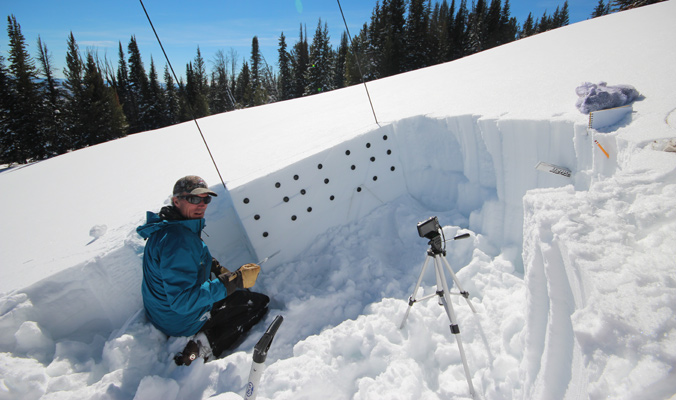Is it safer to be a backcountry skier now than it was 20 years ago? It’s a complicated question, but most snow-safety gurus believe the answer is yes. We spoke with eight leaders in avalanche mitigation and rescue about the progress made—and challenges that remain—since Backcountry premiered.
Karl Birkeland, 51, is a longtime avalanche forecaster and director of the U.S. Forest Service National Avalanche Center in Bozeman, Montana. Here’s an excerpt from our conversation on 20 years of education, safety and snow science.

Karl Birkeland practicing his art in Yellowstone National Park, Mont. [Photo] Paul Cronin
That doesn’t mean they don’t have to practice with them, because people who practice are faster and every second counts. But if you take two people and they both practice with their beacons a lot, and you put a new beacon in one guy’s hand and an older beacon in the other guy’s hand, the guy with the new beacon is going to be faster every time.
That said, all the tools you have in your pack, you should use to turn you away. You shouldn’t justify skiing something because you have a new beacon or an airbag backpack or because you have a really good partner that day. If you do that, you’re going to get in trouble. Because avalanches aren’t always survivable. If you get caught in a big slide in bad terrain, you’re going to get killed.
It’s similar to what we’ve found in other areas. For example, people put studded snow tires on their cars, but it turns out that people with studded snow tires have the same accident rate as people without them. And the reason is because, when you have studded snow tires on, you drive faster.
—
This story was first published in the November 2014 issue. Find the other conversations in this series here.











Related posts:
The Skills Guide: Four Steps Toward Enlightenment
Mountain Skills: How to really read the avalanche forecast
Medical Alert: Dealing with unexpected emergencies in the mountains
Mountain Skills: Why good ski partners matter